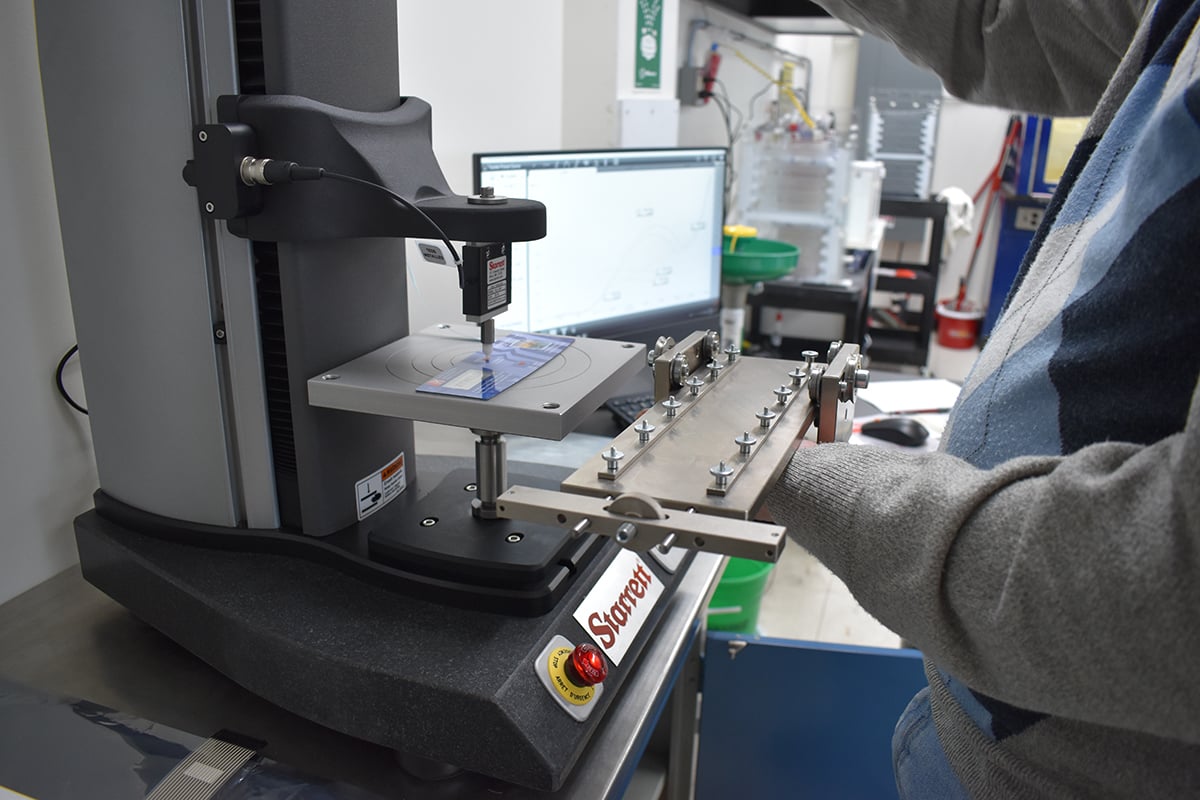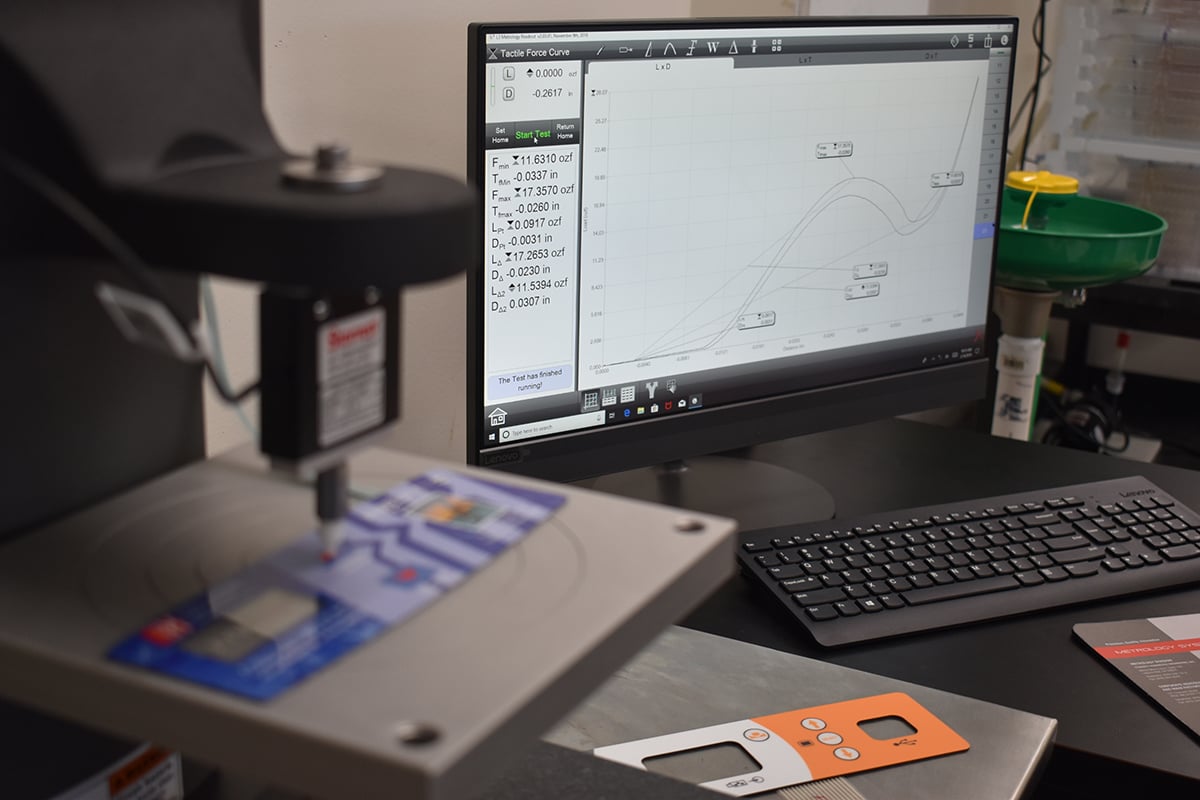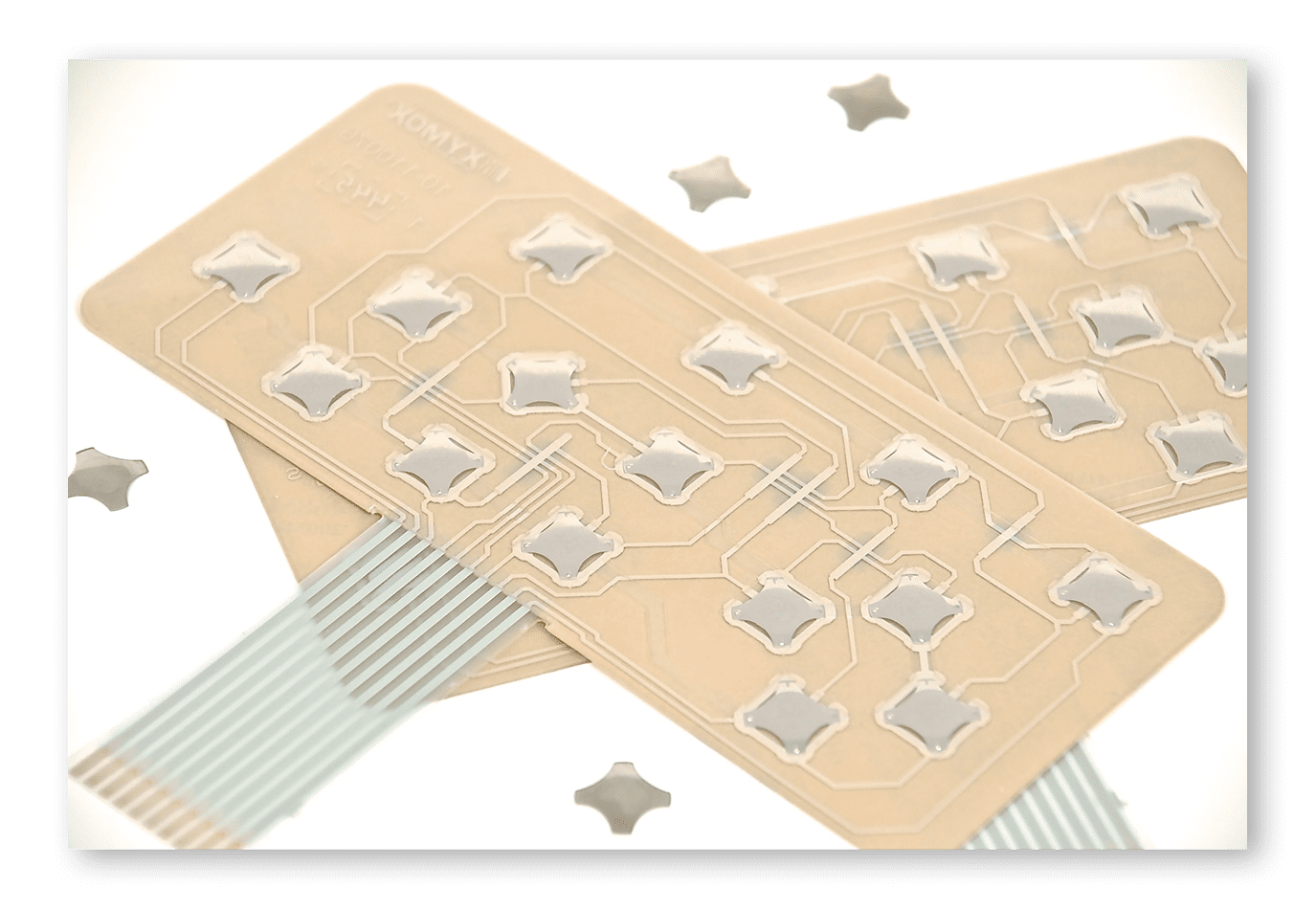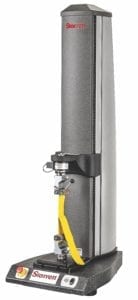Human to Machine Interfaces (HMI) are how we communicate with devices. Of course, the printed circuitry on a membrane switch or touch sensor needs to work, but there are other factors that can have critical affects on the quality and functionality for the life of a device. Two that are often overlooked are the metal domes and adhesive.
Field failures can often times be prevented by using quality materials. There is testing equipment specifically designed to help suppliers understand the level of quality of the materials being sourced. Xymox recently purchased a new Starrett Force Testing machine, this machine has wide range of testing capabilities but we are most excited about the force curve and adhesive testing capabilities!

Force Curve Testing:
This is measuring the force needed to close a switch as well as the amount of distance traveled in both compression and tension directions during the switching cycle.
The performance of the metal dome is extremely important. The dome is what closes the switch when pushed, in the chance that collapses it can cause the circuit to malfunction or fail.

There are 3 reasons for dome failures:
- The dome itself was not formed properly. This causes stress in the metal and it collapses.
- Improper placement of a dome.
- If a person is using a hard object to actuate the dome other than their finger (like a pen), it could reform the dome and cause it to collapse.
Force curve testing has the capability to determine the incoming quality of the dome, and prove that it is within ASTM and the manufacturers standards before it is even put into a membrane switch. According to Wikipedia, “ASTM International, formerly known as American Society for Testing and Materials, is an international standards organization that develops and publishes voluntary consensus technical standards for a wide range of materials, products, systems, and services.” If the force curve is within standards that indicates that it is formed properly, it also means that the metal dome will give your end user the right tactile response (there is nothing like the crisp snap of a tactile switch).

Adhesive Pull Testing:
This test determines the adhesive bonding ability to insure there will be no adhesive issues on the product.
“Adhesive strength properties are measured to understand the bonding capabilities of coatings and glues on various types of materials- from paper to substrates to building materials. Both 90° and 180° testing can be performed to measure the peak holding strengths under standard test methods…” – (Source: Starrett)
Adhesive testing, at Xymox, may fall into one of several categories:
- When new substrates or inks are evaluated, it is critical to test if the adhesive that is being used is compatible with the new material.
- Testing new adhesives with current inks to confirm they play nice together and the bond is not compromised.
- If an adhesive is beyond it’s two year shelf life, we can investigate the method adhesive supplier use to test their adhesive and duplicate this testing in house. This would let us know if the adhesive has lost any of it’s bond strength.
Sometimes customers require Design Verification and Part Qualification testing, this machine adds to the amount and quality of data that Xymox can provide.
